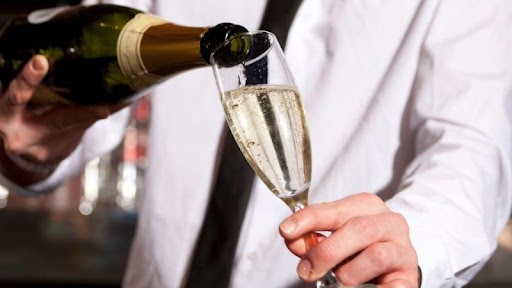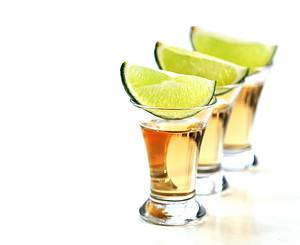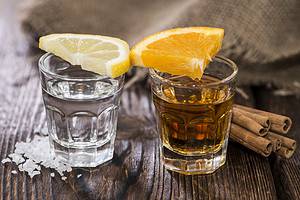There’s more to it than meets the eye when it comes to how to hold a champagne glass. If you’ve ever found yourself wondering if you’re doing it right or have seen others delicately handle their glass with ease and poise, then this article is for you. We’ll guide you through the proper technique for holding a champagne glass to ensure you always look sophisticated when sipping your bubbly.
Getting the champagne glass right is essential at any celebratory occasion, from weddings and anniversaries to New Year’s Eve parties. Not only does the way you hold your glass affect your image, but it can also impact the taste and temperature of your drink. By developing a proper champagne glass-holding technique, you’ll be able to fully enjoy the refreshing flavor of this fizzy beverage and impress those around you with your etiquette.
Before we delve into the specifics, it’s important to know that the two most common types of champagne glasses are flutes and coupes. While each type requires a different holding method to maintain optimum temperature and taste, you’ll find that both methods are straightforward and easy to master. With just a little practice, you’ll be able to confidently navigate any social event with a champagne glass in hand.
Table of Contents
Champagne Glass Types
There are a few types of champagne glasses that you may encounter. Each of these has its own unique characteristics, making them suitable for different occasions and preferences. Here’s a closer look at the three main types: Flute, Coupe, and Tulip.
Flute
The Flute is a tall, slender glass with a long stem and a narrow bowl. It is the most commonly used glass for serving champagne and sparkling wine. The flute’s design helps to preserve the wine’s bubbles and enhance its aroma.
- Ideal for: Sparkling wine, champagne
- Pros: Preserves bubbles, emphasizes the aroma
- Cons: Less suitable for white wine
The narrow bowl of the flute helps to minimize the surface area exposed to air, which keeps the bubbles intact longer. Its elegant shape also lends itself well to toasting and sipping.
Coupe
The Coupe is a flat, wide, and shallow glass with a short stem. It was popular in the early 20th century and has a retro, vintage feel.
- Ideal for: Champagne cocktails, style statement
- Pros: Unique aesthetic, sipping champagnes
- Cons: Encourages spillage; bubbles dissipate quickly
The coupe’s broad surface area allows the bubbles to disperse quickly, so it’s best suited for champagne cocktails, where the extra fizz is not as important. It’s often seen at parties and formal occasions for its aesthetic value.

Tulip
The Tulip glass is a hybrid between the flute and coupe; it has a wider bowl and a tapered top, resembling the shape of a tulip flower. It is becoming increasingly popular among wine experts and enthusiasts.
- Ideal for: Champagne, white wine
- Pros: Enhances aroma, keeps bubbles
- Cons: Less commonly available
The tulip’s wider bowl allows the wine to have more contact with air, which helps to release its aromas. The narrower top, meanwhile, keeps the bubbles inside the glass. This makes it an excellent choice for both champagne and white wines.
Holding Techniques and Etiquette
Hold by the Stem
When holding a champagne glass, it’s essential that you hold it by the stem. This is the proper etiquette for enjoying a glass of champagne and helps maintain the drink’s temperature. Champagne should be served chilled, and holding the glass by the stem prevents the warmth of your hand from heating up the drink. Grasp the stem between your thumb and first two fingers, leaving the other fingers free to provide stability.
Fingerprints on the Bowl
Another advantage of holding the champagne glass by the stem is that it helps prevent fingerprints from appearing on the bowl of the glass. The bowl is where the champagne sits, and it’s the part that catches people’s eyes. Keeping the bowl clean makes for a better drinking experience and gives off an air of sophistication. To avoid leaving fingerprints, always handle the bowl with a cloth or a napkin.
Stability and Scent
One key aspect of enjoying champagne is being able to savor its aroma. In order to do this, the glass should be held in a stable manner. By holding the stem, you provide the stability needed to swirl the champagne gently, releasing its aromas. Swirling the glass also allows the drink to breathe, enhancing its scent and taste.
As you can see, there is a lot more to holding a champagne glass than you might have thought. By following these simple techniques and etiquette rules, you’ll be able to fully enjoy your champagne while also looking elegant and refined. Just remember to hold the glass by the stem, keep the bowl free of fingerprints, and maintain stability for optimal scent and taste.
Tasting and Savoring Champagne
Sipping and Flavors
When tasting champagne, it’s important to take small sips to fully appreciate the flavors and avoid overwhelming your taste buds. Begin by gently bringing the rim of the glass to your lips, tilting it slightly, and letting the champagne flow smoothly into your mouth.
Once the champagne is in your mouth, swirl it around your tongue to experience the different flavors. Notice the acidity, sweetness, and any fruit or floral notes. Don’t rush. Savor the sip and take the time to appreciate the complexity of the champagne.
Appearance and Aromas
The appearance of the champagne can tell you a lot about its quality and characteristics. Observing the bubbles and the color will give you an idea of the class and method used to create the sparkling wine.
To evaluate the aroma, gently swirl the champagne in the glass and take a deep inhale. Aromas can range from fruity to toasty, and much of the enjoyment of champagne comes from the mixture of flavors and aromas that create a unique sensory experience.
| Characteristic | Visual | Aroma |
|---|---|---|
| Youthful | Bright, clear, vibrant | Fruity, floral |
| Mature | Golden, rich hues | Biscuity, toasty |
Toasting and Enjoyment
Raising a toast is a traditional part of savoring champagne with friends and family. While toasting, it’s essential to maintain eye contact with those you are sharing the drink with and clink glasses gently to avoid spills.
Once the toast is over, continue to enjoy the champagne responsibly, engaging with others and taking small sips throughout the event. The key to truly appreciating champagne lies in the combination of flavor, appearance, aroma, and the enjoyment it brings to celebrations and gatherings.

Alternatives for Holding Champagne Glasses
Sometimes, you might find yourself in a situation where you don’t have a champagne flute or want to switch things up a bit. Here are a few alternative vessels you can use for holding champagne:
White Wine Glass
You might be familiar with the traditional white wine glass. It has a wider bowl and a stem, similar to a champagne flute. To hold a white wine glass, follow these steps:
- Grip the stem: Place your thumb, index, and middle fingers around the stem of the glass.
- Balance: Allow the remaining fingers to rest gently on the base of the glass to ensure stability.
Using a white wine glass will not compromise the quality of the champagne experience. Plus, it offers a bigger surface area, allowing you to enjoy the aroma of the bubbly.
Martini Glass
A martini glass may not be the first choice when it comes to holding champagne, but it can certainly add a touch of elegance and novelty to the experience. Here’s how to hold a martini glass:
- Hold the stem: Grip the stem of the glass between your index finger and thumb.
- Support: Place your other fingers around the stem for additional support and stability.
Although a martini glass does not capture the bubbles and aroma as well as a flute or white wine glass, it still provides a chic alternative for serving champagne. Just remember to handle it with care due to the delicate structure and wide-mouthed design.






